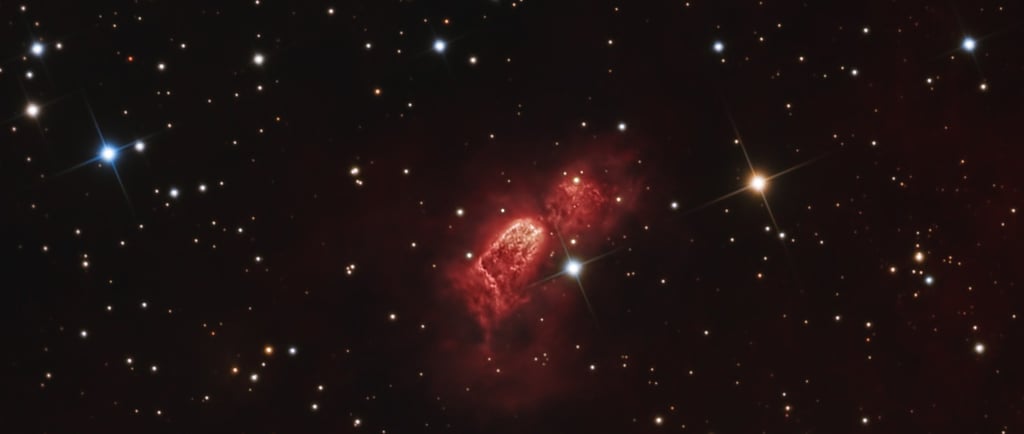MYCN18: The Hourglass Nebula


Introduction to MYCN18
MYCN18 is a remarkable young planetary nebula located approximately 8,000 light-years away from Earth. This captivating celestial object has garnered significant attention from astronomers and astrophotographers alike due to its striking appearance and intricate structures. Captured beautifully using the Wide Field and Planetary Camera 2, the visuals of MYCN18 reveal an hourglass shape with complex etchings adorning its walls, presenting a unique spectacle in the cosmos.
The Colors of MYCN18: A Chemical Symphony
The vibrant colors displayed in MYCN18 are not just aesthetically pleasing; they represent different ionized gases that contribute to the nebula’s overall composition. The red hues signify ionized nitrogen, while the green shades indicate the presence of hydrogen. Additionally, the blue tonality corresponds to doubly ionized oxygen. This palette of colors not only enhances the beauty of MYCN18 but also provides vital clues about the physical and chemical processes occurring within the nebula.
Significance of MYCN18 in Astronomical Research
MYCN18 serves as an important subject of study for scientists dedicated to unraveling the mysteries surrounding planetary nebulae. These objects are remnants of dying stars, and their evolution is crucial to our understanding of stellar life cycles. The intricate patterns observed in MYCN18's structure may provide insights into how such nebulae interact with the surrounding interstellar medium, influencing the formation of new stars and planetary systems.
Moreover, studying the ionized gases in MYCN18 allows astronomers to gain a better grasp of the chemical processes that dominate the late stages of stellar evolution. Understanding these processes may lead to breakthroughs in our comprehension of the universe's development and the life span of various celestial bodies.
In conclusion, MYCN18 stands as a beautiful and scientifically significant young planetary nebula that continues to intrigue astronomers. Its stunning colors and intricate structures not only captivate the eye but also play a crucial role in advancing our knowledge of the cosmos. As research progresses, MYCN18 will undoubtedly remain a focal point of exploration in the field of astrophysics, shedding light on the complex interplay between stars, gases, and the universe itself.
